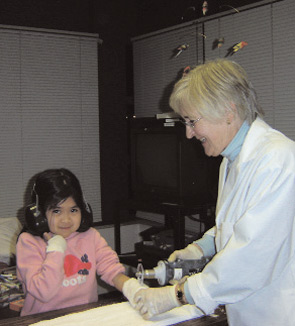
Treating children with rheumatologic diseases takes a unique approach. “You shouldn’t treat them as little adults,” says Gay Kuchta, OT, who works in pediatrics at the Mary Pack Arthritis Program at Vancouver Hospital in British Columbia. “They take special consideration.”
Kuchta sees a wide spectrum of rheumatologic diseases, including juvenile rheumatoid arthritis, scleroderma, and lupus, in the young people she treats. Her patients include children from the large and diverse metropolitan population of Vancouver to the indigenous First Nations people of the rural Yukon, which is about 2,000 miles away.
Whatever the patient group, much of her work involves helping kids participate in everyday school activities. “Children with arthritis have trouble sustaining a grip for long periods of time,” she says. “Kids in 11th and 12th grades do a lot of writing, while kids in elementary school do a lot of coloring.” This problem is usually overcome by having the child try several different types of writing utensils or by using a laptop computer.
Because of fatigue and pain, children may also have trouble carrying their school backpacks, says Kuchta. She’ll often go through their packs to get rid of unnecessary items such toys and makeup pouches. Sometimes having two sets of book—one left at home and one at school—helps lighten the load. She also talks to students about the appropriate sized backpack and whether they need a waist strap to provide support.
One of Kuchta’s patients, a 14-year-old girl with polyarticular juvenile idiopathic arthritis, had to climb 40 flights of stairs during the school day—often with her backpack—which put a huge strain on her already inflamed knee and ankle joints. Kuchta talked to the school about rearranging the student’s schedule to cut down on the number of stairs taken each day. Elevators generally aren’t a popular option with young patients. “They associate them with students who have developmental delays,” she explains.


